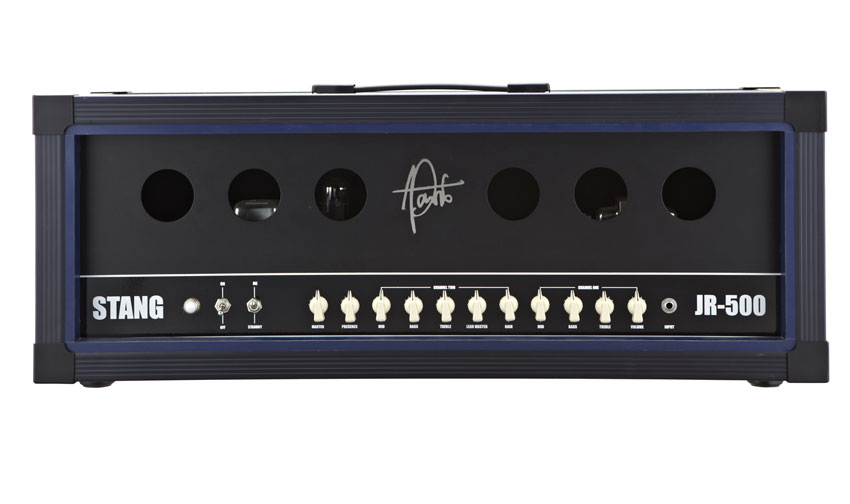MusicRadar Verdict
For players with a dedicated road crew, it's definitely work checking out. The rest of us might need to see what Davis comes up with next. One to watch out for.
Pros
- +
Clean, simple design. Sonically versatile.
Cons
- -
No onboard switching (although it will be available on future builds). Big and heavy.
MusicRadar's got your back
Another new British amp brand to investigate, Davis Amplification's first model is the Stang JR500, inspired by the legendary Ford Mustang muscle car. Like its namesake, the Stang is no lightweight, but looks the part when teamed with its matching 4x12 loudspeaker cabinet (included in the price).
Inside the big and heavy cabinet is a 50-watt, two-channel all-valve amp, with separate EQs and global master and presence controls. A steel faceplate with six large holes adds a few extra pounds, as well as ensuring the valves stay cool.
Sounds
Like some amps aimed specifically at professional users, the Davis works best at higher stage volumes rather than bedroom levels. The clean channel is really clean, with a lot of headroom and punch, while the lead channel has a very usable overdrive voice, with lots of harmonic warmth tempering an aggressive bite that's perfect for metal and shredding, with a lot of gain on tap.
Using our standard go-to instruments - an old Strat loaded with regular output Duncan Alnico Pros and a PAF-powered Les Paul Standard - we like the Stang's clarity and balance, which brings out the best from the Strat, with a nice woody midrange, snappy bass and a biting treble that manages to be aggressive but pain-free.
"Despite the rather uncompromising design, it's sonically quite a versatile head"
Swapping to the Les Paul reveals the Stang's preference for guitars with a little more output and midrange punch, producing a sweet and vocal sustain on overdriven leads and a powerful crunch, aided by a tight bass and fast attack that makes the Stang just as good for powerchords as it is for leads.
Despite the rather uncompromising design, it's sonically quite a versatile head - more so than its image suggests, and while metal and rock are what it does best, you can tear up the blues with it too - the Strat sounds especially good for this, and we reckon a good Tele would sound great too. The effects loop is also well-engineered and sounds equally warm with stompbox and semi-pro rack effects.
It's always good to see another new British amp brand, and Davis has a unique take on what makes a great guitar amp, so it's just as likely to succeed as any other. We like the Stang's clean and simple layout, the uncompromising build quality and the sounds from both of its channels. Because it's custom-built to order, you can specify any colour you want, too.
Want all the hottest music and gear news, reviews, deals, features and more, direct to your inbox? Sign up here.
Our only niggle is that the channels can be switched only with a footswitch - there's no onboard switching function, although this is going to be incorporated in subsequent builds. While we understand the intent behind the design, we're not so certain about the sheer physical size and weight of this particular model. And the price puts it firmly into the pro league, with plenty of serious competition.
As much as you may like it, the Stank isn't one for those seeking portability, either…
